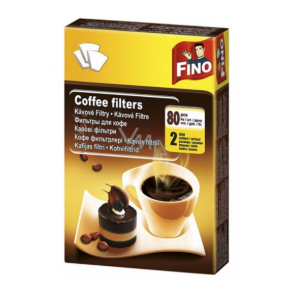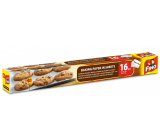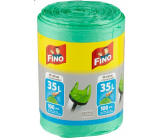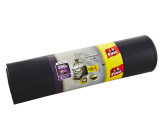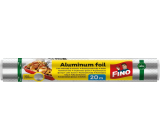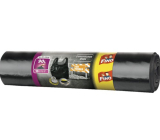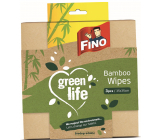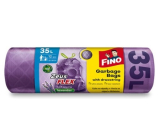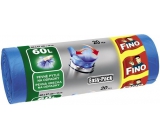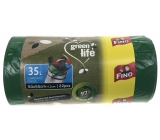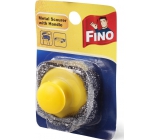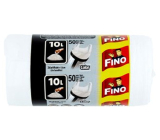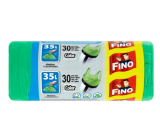- Candles, essential oils
- Air fresheners
- Food products
- Healthy lifestyle
- Household
- Home Decor
- Kitchen utensils
- Paper napkins, tea towels
- Foil, foil, paper
- Bags bags
- Bags
- Cork stoppers, PE
- Demijohns
- Skewers, toothpicks
- Chopping boards
- Pot pad
- Sklenky, panáky rozlišovače
- Cans
- Cups
- Decanters
- Bottles
- Spoons
- Filters for coffee machines
- Mašlovačky
- Scrapers
- Turner
- Wooden spoons
- Openers
- Ladles
- Trays and platters
- Podtácky
- Bowls
- Food jars
- Preserving lids
- Termoláhve
- Placatka
- Gadgets - widget
- Spice stickers
- Dirt traps, tubing
- Plastic, disposable tableware
- Home textiles
- Household goods
- Thermometers, technical gauges
- Clock and alarm clocks
- Haberdashery
- Flat decorations
- Information signs
- Decoration
- Elektro
- Health
Fino Coffee filters 2 size / 80 pieces
| Code: | 98387 |
| EAN: | 5900536263540 |
| Producer: | Gr.Sarantis s.a. Francie |
| Brand: | Fino (web) |
 | |
- First straighten the filter, then place it in the coffee machine.
- Add the coffee (about one heaped teaspoon per cup).
- Pour boiling Water over it and wait until it seeps through the filter.
Drip, drip coffee, or pour over is one of the alternative ways of preparing coffee. In this way, filter coffee is prepared, which has a specific taste and aroma compared to espresso-based drinks. It also does not necessarily require the use of an often expensive and large instrument. The principle of preparation consists in dripping hot Water on finely ground coffee, which flows through a filter into a catching container (e.g. a teapot or mug). Paper filters are most commonly used, but some devices can also work with special artificial filters. Paper coffee filters were invented by Mellita Bentz in 1908 in Germany. The advantage of the paper version is the possibility of discarding the filter togEther with the coffee grounds that remain after the preparation. Fabric , metal or plastic filters, on the other hand, can be used several times after cleaning.
The first electric drip coffee machine was patented in 1954 in Germany. The disadvantage of using electric devices is the impossibility to influence the preparation. Only the most expensive machines can maintain a constant flow of Water and a constant temperature, two essential parameters in this type of preparation.
On the other hand, some coffee machines have the option of programming the time at which you want to serve the coffee. These machines work on their own and do not need an operator apart from adding Water and coffee to the appropriate spots.
Not always can a coffee lover afford to use an electric coffee machine. WhEther for financial or practical reasons (the coffee machine is often large and not portable), the so-called dripper is used. The Dripper (also known as V60 after a particular model of the Japanese brand Hario) is a funnel-shaped container into which a filter is inserted. Electric coffee machines have these "funnels" already built into them.
The preparation can be divided into 5 steps:
- Inserting the coffee filter
- Rinsing the filter with hot Water
- Pouring the coffee into the filter
- Scalding (not boiling) with Water
- Pouring Water gradually over the coffee in the filter
The coffee filter is inserted into the V60, which is placed on the container in which you want to prepare the coffee. Most often it is decanted into a teapot from which the coffee is further poured. Rinse the filter with warm (here also boiling) Water to avoid a paper taste in the prepared coffee. Put the desired amount of freshly ground coffee into the rinsed filter. For 300 ml of coffee, 22 grams of ground coffee is generally consumed. Soak this coffee by briefly pouring Water over it (about 20 ml). The Water temperature should be between 80° and 90° Celsius. Let the coffee brewed in this way "work" for about 45 seconds. After this time, start pouring the rest of the Water over the coffee in a circular motion. The last step is the most important and often varies between baristas. However, the resulting preparation, togEther with the time for steaming, should not take more than three minutes.
Filtered coffee is very different when compared to espresso-based coffee. Espresso, which is prepared under pressure, is very strong and distinctive in taste. Filtered coffee, on the other hand, has a milder taste, which is due to the preparation through the filter. It has more of the weaker, accompanying notes that disappear when espresso is prepared.
A properly prepared espresso is 30-50 ml. We can prepare any amount of filtered coffee, you just need to weigh an adequate amount of coffee.
This item has not been discussed yet. If you want to be first, click on the button Add a contribution
- First straighten the filter, then place it in the coffee machine.
- Add the coffee (about one heaped teaspoon per cup).
- Pour boiling Water over it and wait until it seeps through the filter.
Drip, drip coffee, or pour over is one of the alternative ways of preparing coffee. In this way, filter coffee is prepared, which has a specific taste and aroma compared to espresso-based drinks. It also does not necessarily require the use of an often expensive and large instrument. The principle of preparation consists in dripping hot Water on finely ground coffee, which flows through a filter into a catching container (e.g. a teapot or mug). Paper filters are most commonly used, but some devices can also work with special artificial filters. Paper coffee filters were invented by Mellita Bentz in 1908 in Germany. The advantage of the paper version is the possibility of discarding the filter togEther with the coffee grounds that remain after the preparation. Fabric , metal or plastic filters, on the other hand, can be used several times after cleaning.
The first electric drip coffee machine was patented in 1954 in Germany. The disadvantage of using electric devices is the impossibility to influence the preparation. Only the most expensive machines can maintain a constant flow of Water and a constant temperature, two essential parameters in this type of preparation.
On the other hand, some coffee machines have the option of programming the time at which you want to serve the coffee. These machines work on their own and do not need an operator apart from adding Water and coffee to the appropriate spots.
Not always can a coffee lover afford to use an electric coffee machine. WhEther for financial or practical reasons (the coffee machine is often large and not portable), the so-called dripper is used. The Dripper (also known as V60 after a particular model of the Japanese brand Hario) is a funnel-shaped container into which a filter is inserted. Electric coffee machines have these "funnels" already built into them.
The preparation can be divided into 5 steps:
- Inserting the coffee filter
- Rinsing the filter with hot Water
- Pouring the coffee into the filter
- Scalding (not boiling) with Water
- Pouring Water gradually over the coffee in the filter
The coffee filter is inserted into the V60, which is placed on the container in which you want to prepare the coffee. Most often it is decanted into a teapot from which the coffee is further poured. Rinse the filter with warm (here also boiling) Water to avoid a paper taste in the prepared coffee. Put the desired amount of freshly ground coffee into the rinsed filter. For 300 ml of coffee, 22 grams of ground coffee is generally consumed. Soak this coffee by briefly pouring Water over it (about 20 ml). The Water temperature should be between 80° and 90° Celsius. Let the coffee brewed in this way "work" for about 45 seconds. After this time, start pouring the rest of the Water over the coffee in a circular motion. The last step is the most important and often varies between baristas. However, the resulting preparation, togEther with the time for steaming, should not take more than three minutes.
Filtered coffee is very different when compared to espresso-based coffee. Espresso, which is prepared under pressure, is very strong and distinctive in taste. Filtered coffee, on the other hand, has a milder taste, which is due to the preparation through the filter. It has more of the weaker, accompanying notes that disappear when espresso is prepared.
A properly prepared espresso is 30-50 ml. We can prepare any amount of filtered coffee, you just need to weigh an adequate amount of coffee.
